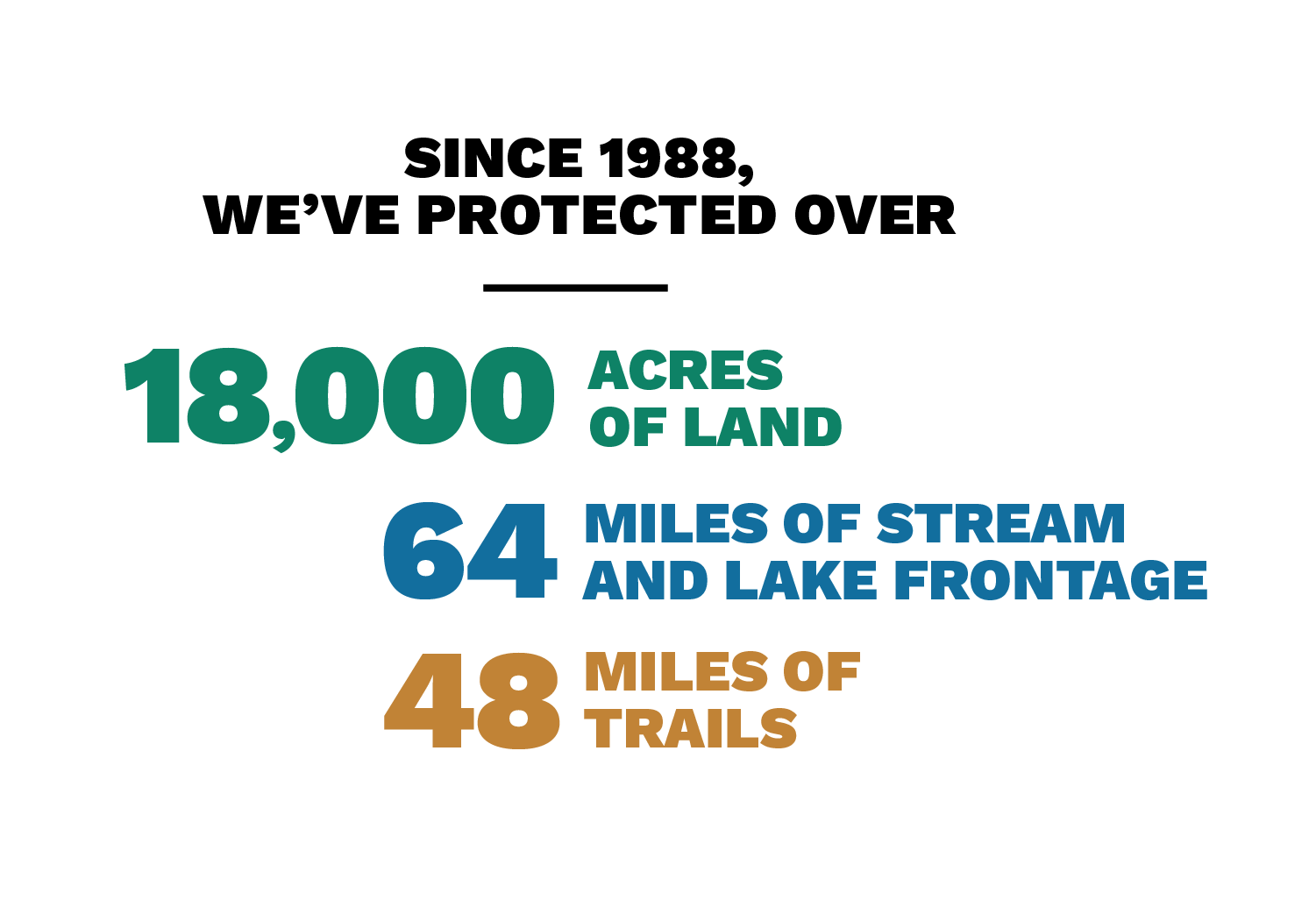Joe’s Place: Diana Kohler Protects the Swamp Her Late Husband Loved
From our 2010 Spring Newsletter
There’s a sweet spot at Diana Kohler’s farm where her late husband, Joe, used to spend time. A sandy knoll overlooks a serene wooded swamp where he hunted for years. “When he got older, he liked to take the dog and his pickup truck over there and just sit,” she recalls. “He said, ‘I can’t shoot those pretty things any more.’ He’d read the paper, drink his coffee, and eat the donuts he shouldn’t have been eating. He really loved it there.”
The swamp and its surrounding 45 acres have forever been preserved through the bargain sale of a conservation easement. Another 92 acres, much of which is in cherry and hay production, remains unrestricted. Clean Michigan Initiative funds, which are designated for watershed protection, helped make it happen, along with Diana’s bargain sale contribution.
“The Kohler conservation easement (CE) is a sort of proverbial ‘missing puzzle piece’ in the way it links the wetlands of the Veronica Valley County Park with the Windham Conservation Easement (an 80 acre woodland and wetland nearby that was permanently preserved in 2008.) Together these lands form a large corridor of preserved wetland and woods adjacent to Mebert Creek.” says the Conservancy’s Director of Land Protection, Matt Heiman. “Protecting intact wildlife habitat along stream valleys promotes the natural movement of animals and helps maintain healthy native plant populations.”
Diana says it was something Joe would have wanted. “His favorite spot will never change now,” says Diana.
Conserving the land was also part of an unwritten agreement Joe made in 1969 with the former owner, a woman named Barbara Walters. At the time, another buyer was vying for the farm. But ultimately Barbara decided to sell to Joe. “She told him that it was because she knew he would never change it or develop it, that it would stay as a farm,” says Diana.
Back then the couple and their four children were living with Joe’s parents on land that his great-grandfather, Bernhard Kohler had homesteaded back in the 1860s. Their fifth child, a daughter, was born the day they signed the papers: Valentines’ Day, 1969. They were thrilled to get into their own place, even though they had no running water for months and had to haul buckets from a nearby creek.
Joe made his living as carpenter. In his spare time he updated and expanded the old place. For years they lived amidst ongoing construction, but it was a very happy chaos, says Diana. They also tended cherries and hay grown to feed a herd of cattle. Joe kept a large vegetable and flower garden, where Diana says he “used to sit and say he was watching things grow.”
Joe and Diana had a standing weekly ‘date night’ that included dinner at a buffet spot Joe was fond of, and then a run to the grocery store to stock up for the week. The driveway into their place spans a quarter-mile. In winter they parked on Otto Road. After they cashed out, Diana says they would call home and tell the kids to meet them at the road with the toboggans and flashlights to haul the stuff up to the house.
It was a great, hardworking life; one that ended all too early when Joe was diagnosed with cancer. He passed away in 2007 at the age of 65. He and Diana had never talked about a conservation easement but when she read about her neighbors, the Wyndams, who did one, she knew Joe would have been in favor of it.
“The kids and I would eventually like to see all of the land preserved, but we need to leave our options open,” says Diana. Years ago she and Joe deeded each child two-acre splits that are located around the perimeter of the farm. Four of them have built homes. Diana says that some of her family might have preferred to build in the more scenic interior, but Joe “wouldn’t hear of it,” recalls Diana. “Whenever we talked about it, he always said, ‘I don’t want my farm broke up.’”
“Conservation agreements are a great tool for protecting land while also keeping it in private hands,” says Heiman. He adds that while the Veronica Valley Park is open to the public, the Windham and Kohler properties are not open to the public.
The fact that she has already protected part of her land would increase her chances of receiving federal farmland protection funds to protect the rest of the farm (about 50 acres.). Diana says that if and when such funds come available, she’s ready to work with the Conservancy again. “It’s been a great experience,” she says. “Matt was absolutely fantastic. He really understood our needs and did everything he could to accommodate them,” says Diana.
Joe’s wish for the entire farm, as well as the woman who owned it before him, may one day a reality. In the meantime, everyone’s happy knowing that Joe’s spot overlooking his beloved swamp is forever preserved.



